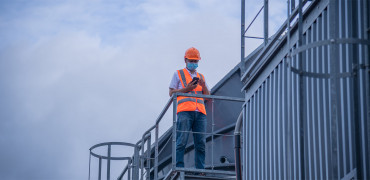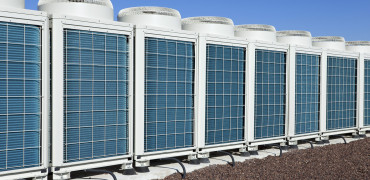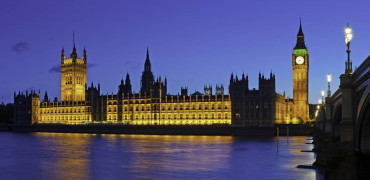As part of the wider shift towards the energy-efficient design of building services, there must be a greater focus on the heating, cooling and ventilation equipment installed in the UK’s retail spaces.
This is where it is possible to make quick wins for businesses that can also ensure they keep running costs to a minimum.
The government’s Build Back Greener strategy set out proposals for the decarbonisation of the UK economy by 2050, businesses
At the same time, consumers in general are backing calls for significant carbon reductions to be made in the next decade.
From Part L of the Building Regulations to the government’s Minimum Energy Efficiency Standards (MEES), building managers and owners of non-domestic buildings are increasingly having to meet strict legislative requirements designed to get the nation on the road to ambitious targets for net zero.
Buildings can be future-proofed against net zero targets without compromising on the customer experience
Solutions exist
With the right technology, installers and project managers can reduce costs, boost performance, and increase energy efficiency – and ultimately ensure shoppers have a comfortable, low-carbon shopping experience for years to come.
This also offers an important opportunity to rethink the entire design and operation of buildings in the retail industry, in order to meet net zero targets.
In future, the retail sector must focus on adapting buildings to meet legislation for energy efficiency, while also prioritising comfort and safety for shoppers.
We have been working with the British Retail Consortium (BRC) as a contributor on the Climate Action Roadmap Pathway 2, which aims to help retailers to operate efficient sites powered by renewable energy.
In conjunction with the BRC, we have produced a step-by-step guide to energy efficiency and carbon reduction in the retail industry.
This includes the five steps that any retailer can take to start making an impact – regardless of size.
Making heating sustainable
Heating is one of the UK’s largest producers of greenhouse gas emissions, so decarbonising the way we heat our buildings is critical for meeting net zero targets.
While there are a growing number of low-carbon heating solutions available for use in commercial spaces, technologies like air source heat pumps are particularly suited for applications in the retail sector. This is because these inverter-driven heat pumps use a variable speed compressor to regulate the speed of output depending on the temperature requirements of the building.
As a result, high volumes of energy are only used during periods of high demand – an ideal solution for shops and busy commercial centres where demand fluctuates at different times of the day. Heat pumps can also be wall-mounted with a streamlined, compact design, which operates quietly and discretely without disturbing shoppers.
Air curtains that can be connected to heat pumps are also an effective way to reduce wastage of energy as they restrict temperature-controlled air from within a shop from escaping out of the front door. In addition to maintaining the indoor temperature of the shop, air curtains help to keep down the running costs and energy needing to be generated – as well as stopping external pollution and insets from coming into the shop. This enables retail to benefit from a truly ‘open-door policy’, without compromising on energy efficiency.
Providing year-round comfort
Customers are likely to linger longer when they feel most comfortable, so if your store is too hot or too cold, you could well be driving them away.
Alongside heating, retailers need to consider energy efficient ways of cooling spaces, as it can otherwise be difficult to regulate the inside temperature of stores and provide a year-round comfortable experience for shoppers.
Technology such as commercial chillers offer an energy-efficient way of cooling a building, as they use chilled water to absorb heat from the building, keeping stores at the most comfortable temperature at any given time.
Heat recovery air conditioning systems like the City Multi Variable Refrigerant Flow (VRF) system can provide simultaneous heating and cooling to a building, so that the excess heat from areas that need cooling, such as IT Server rooms, can be used in areas such as changing rooms.
VRF systems also offer complete flexibility as they can be connected to up to 50 indoor units, including ceiling cassettes, floor standing and wall mounted types, meaning they are ideal for medium and large retail applications.
Prioritising health and wellbeing
While energy efficient heating and cooling solutions have a significant part to play in helping the retail sector meet future carbon reduction targets, installers and project managers must also focus on the provision of good indoor air quality.
The Covid-19 pandemic has highlighted the importance of ventilating indoor spaces, and the impact of poor-quality air on our health.
With the level of pollutants indoors up to five times higher than outdoors, spaces such as shopping centres are at particular risk of poor air quality if the provision of ventilation and fresh air isn’t prioritised.
Mechanical ventilation with heat recovery (MVHR) technology, can provide energy efficient fresh air by extracting up to 90% of the heat energy from the outgoing stale air and transferring it to the fresh, in coming air. This provides a constant supply of fresh air for customers, while also maximising energy efficiency.
With retailers increasingly having to adapt their spaces in line with strict regulations and ambitious climate change targets, it’s important that your premises are not left behind.
With the right equipment and technology, senior decision-makers, installers and project managers can ensure that their buildings are future-proofed against net zero targets for years to come - without compromising on the customer experience and overall comfort levels.
James Harman,is a Business Development Manager for the Corporate Team




